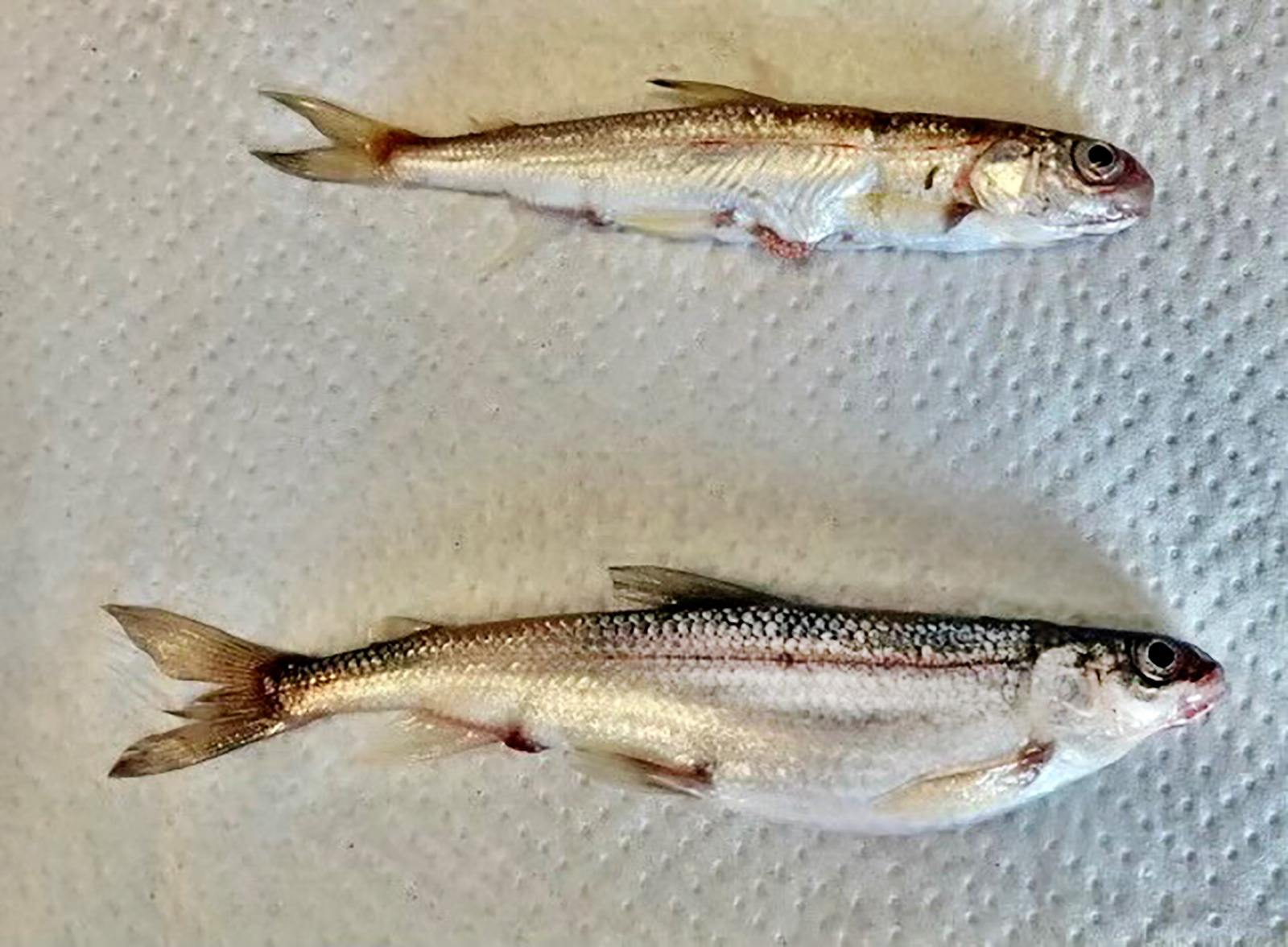State fisheries biologists have been plying Northwest Montana’s deepest glacial lakes in search of a rare native fish species, the recent discovery of which could help shed light on the shifting food webs in aquatic ecosystems, as well as climate-induced stressors.
Last summer, Montana Fish, Wildlife and Parks (FWP) biologists Sam Bourret and James Deraleau, as well as National Science Foundation intern Niall Clancy, embarked on a research project to better understand the distribution of pygmy whitefish, a small salmonid that is designated a “Species of Concern” in Montana. The unique fish are distinct from their mountain whitefish and lake whitefish cousins due to their specific habitat and spawning requirements, living and reproducing in deep, cold-water lakes. Scientists believe the species first arrived with the formation of glacial Lake Missoula approximately 10,000 to 20,000 years ago; when the sprawling lake receded along with the glaciers that scoured the valley, these deeper lakes remained behind, perfectly equipped for pygmy whitefish to survive.
The FWP biologists, based out of the agency’s Region 1 office in Kalispell, began surveying select lakes for the elusive fish species as part of their regular management and monitoring efforts. They deployed small-diameter gill nets at greater depths in an attempt to key in on pygmy whitefish specifically, and so far two lakes have emerged as successful candidates: Tally Lake near Whitefish, which at 445 feet is the second-deepest natural lake in Montana, and Big Salmon Lake, a remote lake deep in the Bob Marshall Wilderness.
“It is exciting that we are still making scientific discoveries in the distribution of pygmy whitefish in Northwest Montana,” Bourret said.
The discovery helps biologists gain new data for this age-old species that will help inform FWP about their distribution, impacts from predators and habitat requirements. Since the distribution of the pygmy whitefish is associated with “glacial refugia,” coupled with the fact that they are primarily found at depths below 100 feet in cold-water lakes, it is likely they are sensitive to warming temperatures, Bourret said.
Another important reason to gain a better understanding about pygmy whitefish, Bourret explained, is due to the role they play in the overall ecosystem’s food web.
Although found in a limited number of water bodies, pygmy whitefish can serve as an important food source for other fish, such as native bull trout and westslope cutthroat trout, as well as lake trout and even birds. For example, a comprehensive food habits survey of fish species in Flathead Lake and the lower Flathead River in 1981 showed that pygmy whitefish accounted for at least 58% of the dietary biomass of bull trout during October and November.
“Pygmy whitefish are important to study because all aspects of the food web impact the whole native fish assembly,” Bourret said. “By understanding more about pygmy whitefish, we are better equipped to conserve and manage aquatic ecosystems when faced with impacts from climate change.”
Pygmy whitefish are known as “broadcast spawners” — meaning they generally spawn during mass spawning events in one or more consecutive months — in both the shallows and tributaries of lakes, but the specific physical characteristics of spawning sites are not well understood. They migrate short distances in late November and December, when they move from Flathead Lake and congregate at the mouths of the Swan and Flathead rivers before entering the river systems to spawn. They have previously been identified in Bull Lake, Horseshoe Lake, Little Bitterroot Lake, Ashley Lake, Whitefish Lake, Lake McDonald, Hungry Horse Reservoir, Lindbergh Lake, Holland Lake, Ross Creek, Flathead River, and Ashley Creek.
The state record pygmy whitefish — 9.84 inches long and .36 pounds in weight — was caught Feb. 13, 2010 by Richard Geldrich in Little Bitterroot Lake near Marion.
Due to their small size, however, Bourret said their presence in Northwest Montana lakes has gone largely undetected during the agency’s annual survey and monitoring efforts, which use larger-diameter gill nets, through which the tiny pygmy whitefish can easily escape.
In Big Salmon Lake, Bourret said the biologists used nets that were a half-inch in diameter, setting them deep in the remote water body overnight with the aid of pack-rafts before retrieving them in the tiny vessels using lengths of parachute cord.
Although the native fish species likely won’t have any direct appeal to anglers, their role in the food web may prove critical to sustaining fish species that rely on them as a critical component of their diets.
“The lesser charismatic fauna might not be as striking as their better-known counterparts, but these species really are just as important to the ecosystem,” Bourret told the Beacon. “Historically, we know they’ve been critical pieces of the food web for bull trout, westslope cutthroat and other iconic natives species, so understanding where these species are surviving, and being able to better conserve their habitats, will directly impact the more charismatic members of our aquatic ecosystems, whose conservation is resource intensive and generates a lot of interest.”
